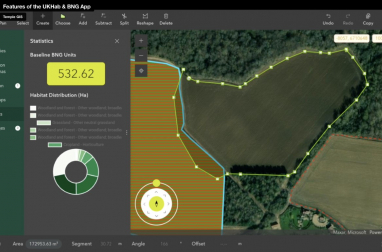- Nike TN Air Max Plus , nike air force 1 shadow air max dia , IetpShops , Women's Nike TN
- retro 11 jordans authentic - Mindarie-waShops - The Nike gray Air Max Dn is Dropping For Air Max Day 2024
- The 25 Best Air Force basketball 1 Colourways of All Time , IetpShops , Nike Swoosh logo embroidered fleece shorts
- IetpShops - Is a Nike SB x Air Jordan 8 Retro BG Three - 142 Pine Green in the Pipeline Low PSG DZ4133 , 008 Release Date - Is a Nike SB x Air Jordan 4 Pine Green in the Pipeline - Peat 305368
- Nike LeBron Zoom Soldier VII (7) 'Deep Royal Blue' , Nike va t-il rééditer toutes les Air Force 1 B , IetpShops
- air jordan spring 2021 retro collection release date info
- eastbay restock large amount air jordans
- nike air force 1 low white gold dc2181 100 release date info
- air force 1 shadow
- Air Jordan 1 Satin Black Toe CD0461 016 2019 Release Date 4
- Home
- News and analysis
- Info hubs
- Events
- Video
- Case Studies
- About us
- Magazine
- Advertising
Produced for the industry by the Association for Consultancy and Engineering
Comment
Autonomous vehicles – jargon explained and more questions raised

A great deal of terminology surrounding connected and autonomous vehicles has hit mainstream media. Vice chair of ITS (UK), chair of the Connected Vehicle Interest Group and Mouchel’s head of profession, Ian Patey, busts the jargon and considers a likely future scenario of driverless cars
The jargon explained
Terminology of connected and autonomous vehicles, and driver assistance systems, are all finding their way out of the technical arena and into mainstream news and conversations. Don’t they all mean the same thing, are they really that different?
They are different and many hours have been spent debating the definitions and I am sure that those discussions will go on. But the real point about all of this is not the label we apply to a feature or a vehicle but what it does, the difference it makes.
Autonomous vehicles will be able to move from place to place without any input from a driver at all. So you can get in, say (or type) where you want to go and the next thing you need to do is get out at your destination – what you do during the travel time is entirely up to you, your fellow passengers and the facilities available. If that is one end of the technology development scale – far off into the future – connected vehicles are at the other end.
"The fully autonomous go anywhere, do anything vehicle still seems extremely remote" Ian Patey
Connectivity has many strands. Infotainment systems are becoming more and more sophisticated with your car becoming another device in your personal music and information network. Through various apps the concept of navigating an end to end journey has become a reality. Connectivity between vehicles and external systems is also a reality with companies such as INRIX using in-vehicle data to provide real time travel information.
Connectivity has the potential to make travel safer. This is where the jargon starts to kick in – we have V2V, V2I and V2X to contend with. V2V is vehicle to vehicle, simply exchanging data between vehicles. This could be data about sudden braking, speed, use of windscreen wipers and so on that helps inform about traffic or weather conditions. It can be much more complex such as in a platoon where one vehicle effectively drives the others. V2I is vehicle to Infrastructure and can be simple information about traffic signals. V2X is vehicle to anything. The safety applications are significant, potentially.
Driver assistance is used to describe systems that help drivers such as lane keeping and autonomous emergency braking. As we saw with ABS and ESP these systems soon move from premium extras to become standard features.
Are we connected now?
Many vehicles are already connected – infotainment systems connect a vehicle to an individual’s music system and navigation apps. Some organisations also use GPS data from vehicles to determine real time traffic information, calculating speed and using these connected vehicles as probes. Much of this connected data is used in closed groups created by service providers, so drivers signed up to the group can benefit from information created by the group. The UK government is sponsoring two trials of connected corridors – on the A2/M2 in South East England and the A46 in the Midlands around Coventry. These trial sites will provide vehicle manufacturers, app developers and telecommunications companies opportunities to trial connected services.
What’s stopping it?
The technology, to a large extent, is already in place to enable highly connected and automated vehicles.
Initially, connectivity for infotainment was held back by lack of interoperability between operating systems – just as early mobile or cell phones could only connect to others on the same telecoms network. Connectivity between vehicles (V2V) and between vehicles and other things (V2I and V2X) requires interoperability if they are to make any significant differences to road safety and the user experience. This brings issues of cyber security as well as reliability, speed of communications and location accuracy into sharp focus. Sitting across all of this is cost – who pays for the investment needed?
Where are those “tweaks” to the existing road eco-system that will give the quickest benefits? Are we completely reliant on the vehicle fleet upgrading to include these features or is there a case for providing some after-market fitted devices? If these were provided by the government would that provide more benefits to society than the cost?
The planned trials of connected corridors on the M2/A2 and the A46 will provide some of the answers, but will also throw up some new questions.
What about those human interactions that we rely on now, such as a nod or a wave, which an autonomous vehicle won’t be able to provide? Ian Patey
The insurance sector will see seismic changes – as systems take over the decisions that drivers currently make, the liabilities start to shift from driver to system, from personal to product liability. It has been widely reported that driver error contributes to 90% of motor accidents and hence taking away the driver almost removes the risks from road travel. Can the systems be 100% risk free?
One of the barriers may be people – both inside and outside the vehicles. How will pedestrians react to and interact with autonomous, driverless, vehicles? Will they assume that they will always stop for them – drivers don’t. What about those human interactions that we rely on now, such as a nod or a wave, which an autonomous vehicle won’t be able to provide? The trials of driverless vehicles in places such as Greenwich will be testing the interactions between pedestrians and driverless vehicles.
There is also the question of the people inside the autonomous vehicle, the passengers. It has been assumed that they will relish the ability to read, work, watch a film or sleep – there is a growing concern that motion sickness in such a vehicle on long journeys may be a problem. Much of this – both outside interaction and inside experience – will develop over time as people adapt to new situations.
Even in a connected vehicle, there are unanswered questions about how the driver will react to the plethora of information that will be made available to them in their vehicle rather than at the roadside. Will it be distracting rather than helpful? What is the optimum frequency and location to give information – we are all guilty of checking our smart phones “just in case” rather than waiting for a ring or incoming tone. Does that mean we will be glancing at our in-vehicle screens just in case rather than concentrating on the road ahead?
What will roads look like in the future?
A shift towards autonomous vehicles will present challenges for those public and private organisations who own roads. If we could start with a blank piece of paper (or computer screen) and design a road network just for autonomous vehicles it would be much simpler. The hard part is the mixed economy of vehicles from across the technology spectrum.
Some have imagined what a road network would like if designed just for autonomous vehicles, but a more likely scenario is driverless cars mixing with conventional traffic, cyclists and pedestrians.
There are two compatible possibilities: autonomous vehicles as public transport in urban environments; and highly automated vehicles on motorways where on reaching the right lane, the driver can “lock in” and let the vehicle take over for the long distance. This is essentially what Volvo is trialling in Gothenburg and seeking to do in London. The fully autonomous go anywhere, do anything vehicle still seems extremely remote.





